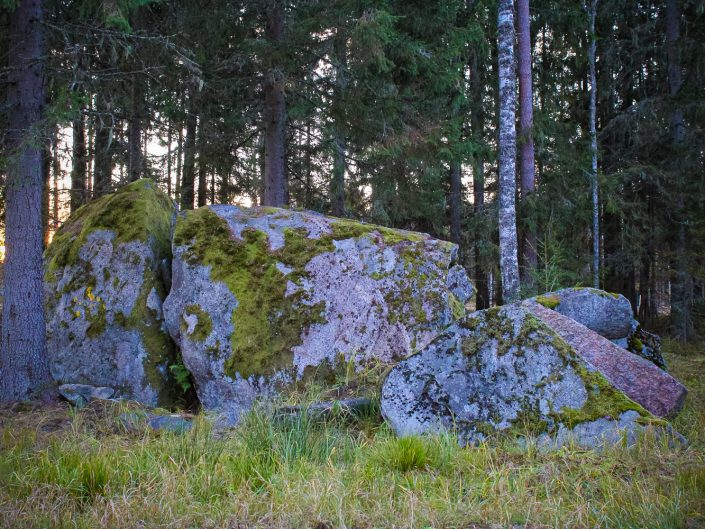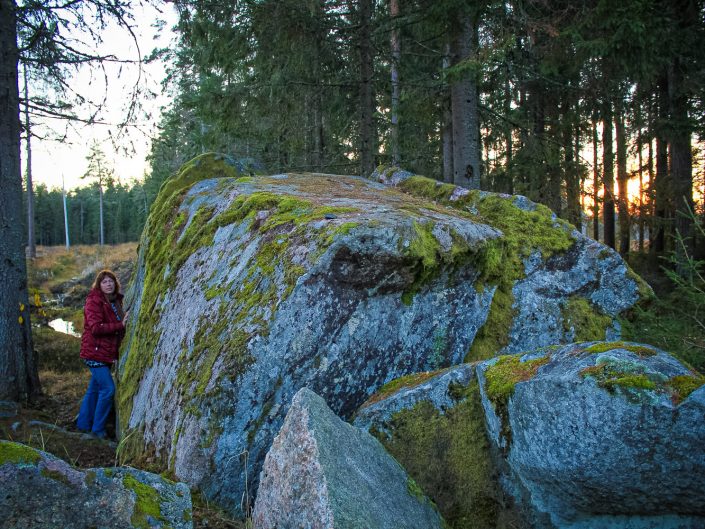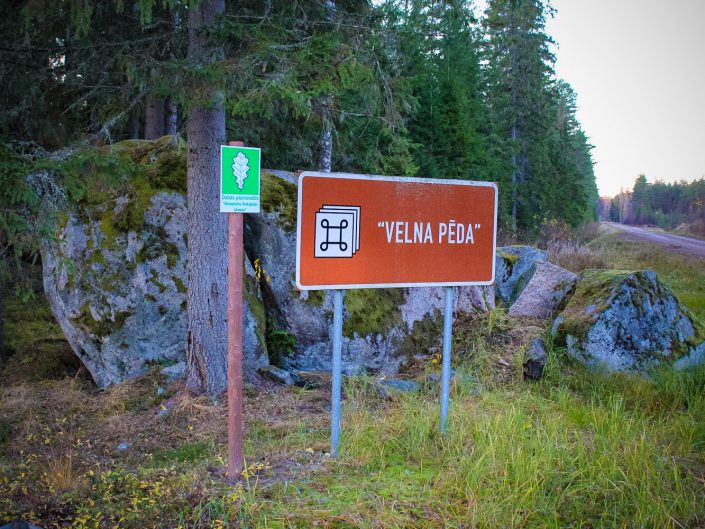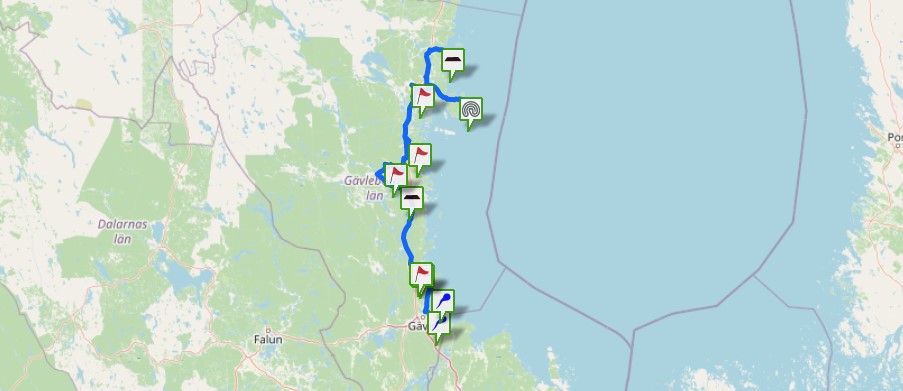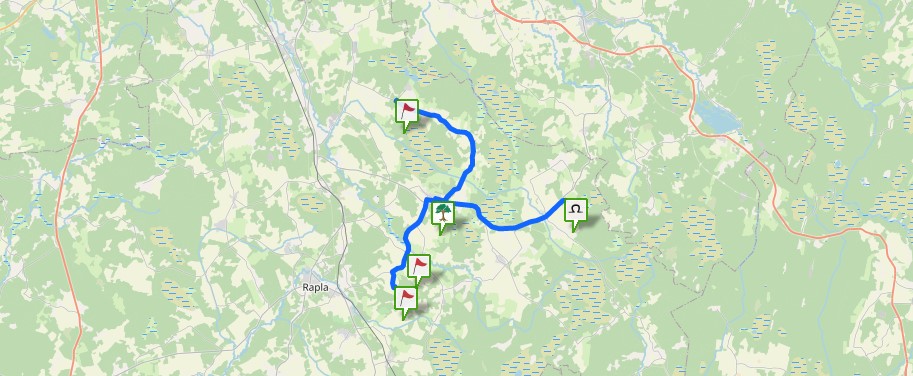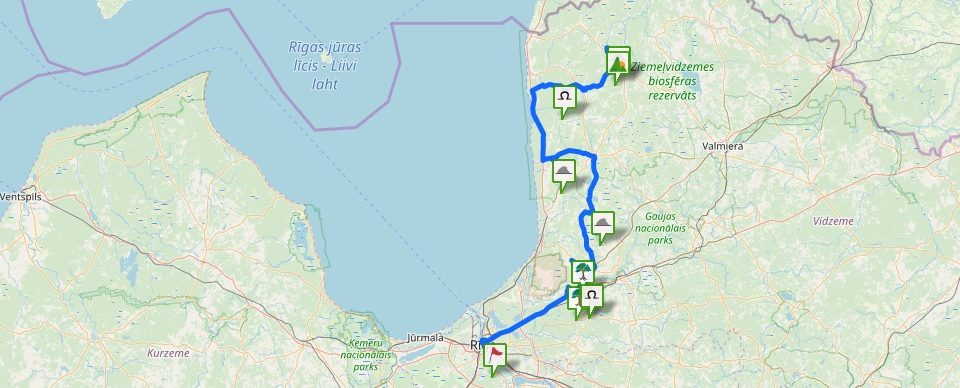An outstanding natural monument in the dense woods of Northern Kurzeme. Unfortunately, it is one of the most demolished Latvian grand stones. It used to be larger than it is seen nowadays. Already in unknown times it was split with shims. Two large pieces were split off and at least three smaller ones, as well as fine pieces, and it is assumed that some pieces of stone had been taken away as well. The total volume of the red large crystal granite stone ranges it among 30 Latvian most distinguished stones. The volume of the stone is 40 cubic meters, circumference 17.3 m, height 3.3 m.
The fact that the stone used to be larger once is proved by its description dating back to the first half of the 20th century (E. Jansons. Dabas pieminekļi Latvijā. // Latvijas zeme, daba, tauta. (Natural Monuments in Latvia.//Latvian Land, Nature, People.) II Volume, 1936, p. 324), “5. Secular stone, a field stone (granite block) during the Stone Hill’s inspection walk of the forest-guard of Dundaga parish of Ventspils county, in marshy woods. The circumference of the stone is 32 m, height 3 m, it belongs to the largest field stones in Latvia, but it is split into 3 parts.” At the beginning of 1990s, a nature researcher G. Eniņš described the stone more imaginatively: “The grand stone is broken, looks like it has been split into several pieces. The main piece of the stone has been split into two parts by a crack resembling a lightning arrow, a stretch wide zigzag crack. Two large blocks have been thrown to the opposite side of the forest firebreak and a heap of smaller broken stones is scattered at one side. Has the Devil himself been raging there? At the stone on the ground there is a broken to pieces wooden plate of underterminable age “Border Stone “Devil’s Foot””. The Devil himself would not have demolished his own stone. The demolisher could be only a human or thunder. But what about the foot itself? No carved foot (either Devil’s or human’s) could be found. Maybe this foot was destroyed when the stone was split into several pieces?” . The stone is attributed to ancient sites due to its mythological name.
The Akmeņkalni Devil’s Foot Stone is under state protection since 1925. Sometimes it is also called the Border Stone and Vanagi Grand Stone according to the name of the closest forest guard’s homestead “Vanagi”.
